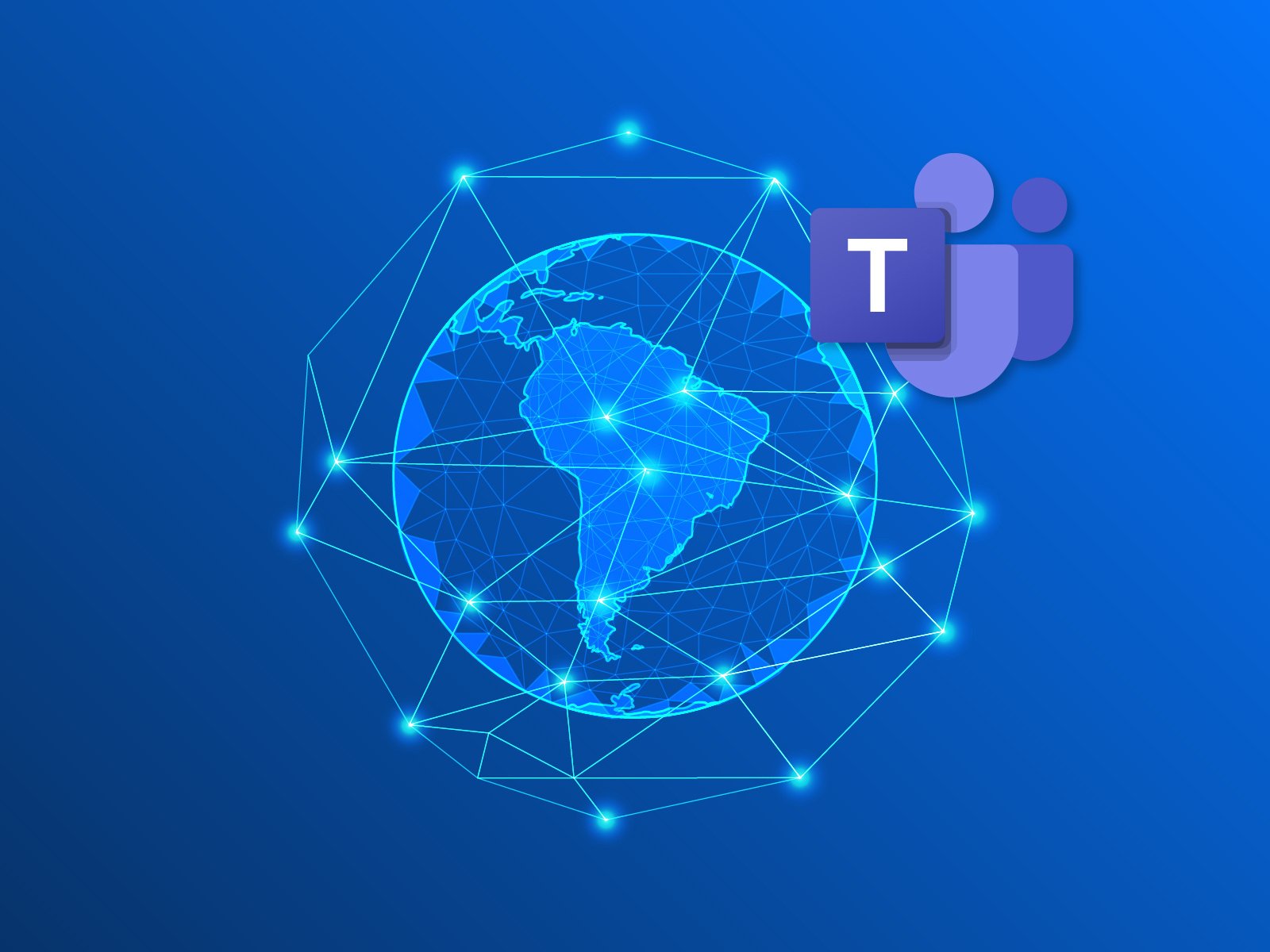The days of desk phones, separate video conferencing systems, and endless email chains are fading as companies embrace smarter, more connected solutions. Unified communications as a service (UCaaS) brings together calling, messaging, meetings, and collaboration into one seamless cloud platform that transforms how teams work together.
This isn't just a passing trend – over half (56%) of businesses plan to increase their UCaaS spending this year,1 highlighting how these tools have become crucial for staying competitive. Read on to learn what makes UCaaS so powerful and practical tips to help you implement cloud-based unified communications effectively.
What Is UCaaS?
UCaaS delivers communication services through the cloud, combining channels like voice calls, video meetings, messaging, and collaboration tools into a unified platform. Instead of juggling multiple apps for different communication needs, businesses can rely on a single service provider for everything.
Because UCaaS works in the cloud, employees can connect using any device from any location without being tied to a traditional office phone system. This flexibility makes it perfect for modern workplaces, especially those with remote or hybrid teams.
/univoip-blog-whatisUCAAS-inline1.jpg?width=850&height=350&name=univoip-blog-whatisUCAAS-inline1.jpg)
Key UCaaS Features
UCaaS platforms help businesses communicate more effectively both internally and externally by combining features like:
Cloud-Based VoIP
Voice over Internet Protocol (VoIP) replaces traditional phone lines by letting businesses make and receive calls using an internet connection. This eliminates the need for outdated landline infrastructure while improving call quality and reliability.
Video Conferencing
Built-in video conferencing enables high-definition meetings, making it easy for teams to collaborate from anywhere. Plus, tools like screen sharing, recording, and virtual backgrounds enhance the meeting experience.
Instant Messaging
Real-time messaging allows employees to communicate instantly, reducing reliance on email and improving overall collaboration. Team chat rooms provide dedicated spaces for ongoing discussions, project updates, and quick problem-solving.
File Sharing and Collaboration
Integrated document sharing and co-editing tools allow teams to work on files together in real-time, so the most up-to-date versions are always accessible.
Presence Indicators
Users can see colleagues' availability status, whether they’re online, in a meeting, or away. This helps teams coordinate more effectively and reduces delays in communication, even when teams are working outside of the traditional office.
/univoip-blog-whatisUCAAS-inline2.jpg?width=850&height=350&name=univoip-blog-whatisUCAAS-inline2.jpg)
Call Routing and Auto Attendant
Advanced call management features like call routing direct incoming calls to the right person or department, while auto attendants provide a professional greeting and menu options to guide callers efficiently.
Business App Integration
UCaaS solutions integrate with CRM, email, and productivity tools to ensure a seamless workflow between communication platforms and business software, reducing manual data entry and enhancing efficiency.
7 UCaaS Benefits for Businesses
Switching to cloud-based unified communications offers several advantages for businesses of all sizes. Some of the biggest UCaaS benefits include:
1. Increased Mobility and Work Flexibility
A 2024 survey revealed that 68% of US organizations offer flexible work models,2 so it’s clear that remote and hybrid work models aren’t going anywhere. UCaaS lets employees connect from anywhere using their laptop, mobile phone, or tablet – a must for businesses with remote and hybrid teams or employees who travel frequently.
2. Scalability for Growing Businesses
Adding new users, expanding to additional locations, or incorporating new features is easy with a cloud-based UCaaS system. Companies can scale communications based on fluctuating demands without having to make expensive, time-consuming infrastructure changes.
3. Security and Compliance
Data breaches cost businesses an all-time high of $4.88 million on average in 2024.3 Leading UCaaS providers offer enterprise-grade security features, including encryption, multi-factor authentication, and regulatory compliance, to help organizations protect data and maintain compliance with industry standards.
/univoip-blog-whatisUCAAS-inline3.jpg?width=850&height=350&name=univoip-blog-whatisUCAAS-inline3.jpg)
4. Cost Savings
UCaaS reduces communication costs by eliminating expensive on-premises phone system hardware and maintenance. And because most providers offer subscription-based pricing models, businesses can enjoy predictable expenses without unexpected repair or upgrade costs.
5. Improved Productivity and Efficiency
UCaaS platforms consolidate multiple communication tools, which means employees no longer need to switch between different apps. They also include tools to streamline workflows to save time on performing repetitive, day-to-day tasks.
6. Enhanced Business Continuity
Because UCaaS is cloud-based, businesses stay connected even during local network disruptions or natural disasters. Redundant data centers ensure that communication remains uninterrupted.
7. Better Customer Experience
UCaaS features like intelligent call routing, CRM integration, and omnichannel support enhance customer interactions. Faster response times and personalized communication improve customer satisfaction and loyalty.
Potential Challenges of UCaaS to Consider
While UCaaS offers compelling benefits, it’s important to understand the potential limitations that come with cloud-based communication systems. Here are some challenges businesses may face:
Control Limitations
For some organizations, handing off communication management to a provider can feel like a loss of control, especially when it comes to performance and customization. Since UCaaS traffic often travels over the public internet, it can be harder to guarantee quality of service (QoS) at every point of the journey.
Telephony Carrier Compatibility
In bring-your-own-carrier (BYOC) setups, integrating existing telephony services with a UCaaS platform can introduce technical hurdles. Troubleshooting across systems may require additional time and expertise.
Platform Interoperability
Not all UCaaS vendors play nicely with one another, particularly during cross-platform meetings and collaboration sessions. While integrations are improving, some compatibility issues may persist, especially in mixed-vendor environments.
Cost Considerations
While monthly subscriptions offer predictable Opex spending, long-term licensing and feature upgrades can add up. Organizations must weigh the total cost of ownership compared to traditional systems.
Security Concerns
Cloud communications come with unique security risks. Voice and video applications can be vulnerable to targeted attacks, and companies may prefer more control over their own security protocols. UCaaS providers often offer strong safeguards, but the shared-responsibility model means organizations must remain vigilant.
Like any major investment, successful UCaaS adoption involves weighing both the upside and the trade-offs.
UCaaS vs. Traditional On-Premises Systems
Still not sure if UCaaS is the right choice for your business? Here’s how these solutions stack up against traditional phone systems:
/univoip-blog-whatisUCAAS-inline4.jpg?width=850&height=1048&name=univoip-blog-whatisUCAAS-inline4.jpg)
Ultimately, UCaaS meets the needs of modern businesses by adapting quickly to changing work environments while maintaining professional communication standards – regardless of where employees work.
Choosing the Right UCaaS Platform: Key Factors to Evaluate
Not all UCaaS solutions are created equal, and finding the right one means digging deeper than just the feature list. Here are six key evaluation areas to help guide your decision:
1. Review Your Current Provider
If you’re already using hosted VoIP or UC tools, check if your existing provider offers a modern UCaaS solution. If not, it may be time to explore a new vendor that offers the full suite of features you need.
2. Define Must-Have Features
Different platforms shine in different areas. Some prioritize core voice features, while others offer robust collaboration tools, contact center capabilities, or industry-specific integrations, such as appointment scheduling for healthcare. Identify your priorities upfront.
3. Understand the Full Cost Picture
Look beyond monthly fees. Consider licensing models, network upgrades, potential hardware replacements, and any migration expenses. Some providers offer BYOC support, which can help reduce telephony costs.
4. Scrutinize Service-Level Agreements (SLAs)
Most providers offer 99.99% uptime, but not all SLAs are equal. Understand how a provider handles outages, support response times, and responsibilities around compliance and emergency services like 911 routing.
5. Align on Security and Compliance
Especially for regulated industries, make sure your UCaaS provider supports key standards such as ISO 27001, SOC 2, and HIPAA (if relevant). Features like end-to-end encryption, role-based access, and audit trails should be included.
6. Look at Integration Capabilities
Does the platform integrate with the tools your teams use daily? Leading providers offer native integrations with CRMs, productivity platforms, and APIs for custom workflows. Some even bundle in CCaaS and CPaaS for all-in-one communication ecosystems.
Choosing the right UCaaS platform means balancing features, compliance, and long-term scalability with your company’s goals.
Best Practices for Implementing UCaaS Solutions
Moving to a UCaaS platform involves more than just signing up with a provider. Here are some best practices for a smooth transition to cloud-based unified communications:
Assess Your Communication Needs
Before adopting a UCaaS solution, evaluate your business’s current communication challenges and identify the specific features your teams need. This assessment can help you ensure the UCaaS solution you choose truly aligns with your operational goals.
Choose a Reliable UCaaS Provider
Choose a UCaaS provider with a track record of uptime, security, and customer support. The right vendor will offer redundancy, seamless integration with your existing tools, and tools that make industry compliance easier.
Ensure Seamless Integration With Existing Tools
Your UCaaS platform should work seamlessly with your existing CRM software, project management tools, and productivity applications. Proper integration prevents workflow disruptions and improves collaboration between your teams.
Train Your Employees
Your implementation success depends on employee buy-in. Provide training and support to ensure your teams understand how to use UCaaS features effectively and consider designating internal champions to help drive adoption throughout your organization.
/univoip-blog-whatisUCAAS-inline5.jpg?width=850&height=350&name=univoip-blog-whatisUCAAS-inline5.jpg)
Monitor Performance and Optimize as Needed
Many UCaaS platforms offer built-in reporting tools that provide insights into call quality, employee engagement, and system performance so you can regularly review analytics and usage reports to identify inefficiencies and optimize your communication strategies.
Prioritize Security and Compliance
While UCaaS providers offer built-in security features, you might consider implementing additional safeguards like multi-factor authentication and regular access audits. Ensuring compliance with industry regulations protects your sensitive business and customer data.
Continuously Evaluate and Adjust
Your business needs will change over time, so you’ll need to continuously evaluate whether your UCaaS solution is meeting expectations. Regularly assess features, costs, and user feedback so you can make adjustments as your company evolves.
UCaaS Architecture Options: What’s Right for Your Business?
Not all UCaaS platforms are built the same. Behind the scenes, the architecture powering your unified communications plays a major role in flexibility, control, and security. Let’s break down the three main types of UCaaS architecture models you’ll encounter:
Single-Tenant Architecture
With a single-tenant setup, each organization gets its own dedicated instance of the UCaaS platform. This setup allows for deeper customization, more granular control over data, and tailored security policies. It's often preferred by industries with strict compliance needs, like healthcare, finance, or government, where control over data residency and feature management is a must.
Multi-Tenant Architecture
In contrast, multi-tenant UCaaS platforms serve multiple organizations using a shared infrastructure. This setup is more cost-effective and easier to manage, as maintenance, updates, and security are handled by the provider. While this approach sacrifices some customization, it enables faster feature rollouts and lowers operational overhead for businesses that prioritize agility over control.
Hybrid Architecture
Hybrid models offer a best-of-both-worlds solution. Here, the UCaaS instance can be deployed within the customer’s own network or data center, while still benefiting from cloud-based feature sets. It gives businesses more authority over where their data resides, ideal for organizations that want flexibility without giving up compliance or performance control.
The right architecture depends on your business priorities. If control and compliance are top of mind, single-tenant may be the answer. If cost-efficiency and scalability win out, multi-tenant or hybrid models might be a better fit.
The Future of UCaaS: Where Cloud Communications Are Headed
As the hybrid workplace becomes the norm, UCaaS adoption continues to rise. Businesses are consolidating voice, messaging, and meetings into a single platform to streamline communication across distributed teams.
Here’s what’s next in the evolution of UCaaS:
AI-Powered Communication
AI is quickly becoming a core part of UCaaS platforms. Features like live meeting transcription, automated translations, and smart meeting summaries are already here. Next-gen capabilities will include:
Digital assistants that automate meeting scheduling, note-taking, and even writing follow-ups
Intelligent recaps with role-based action items
Sentiment analysis through facial or tone recognition
Convergence With CPaaS and CCaaS
More providers are bundling UCaaS with Communications Platform as a Service (CPaaS) and Contact Center as a Service (CCaaS) solutions. This unified approach allows businesses to centralize internal and external communications for greater efficiency and customer engagement.
The takeaway? UCaaS is not just a solution for today, it’s a foundation for the future of enterprise communications.
Up-Level Your Communications With UniVoIP’s UCaaS Solution
UCaaS benefits, from financial savings to improved team collaboration and beyond, make this technology an ideal option for organizations of all sizes looking to modernize their communication systems. However, finding the right UCaaS provider can feel overwhelming, given the many options available.
At UniVoIP, we specialize in delivering cloud-based unified communications that empower businesses like yours to let go of your legacy voice system. Our OfficeConnect™ UCaaS solutions deliver all the advanced features, enterprise-grade security, and seamless integrations modern organizations need to up-level your business communications.
Ready to modernize your business with unified communications as a service? Contact us today to get started.
Sources:
/univoip-feat-whatisUCAAS.jpg)


